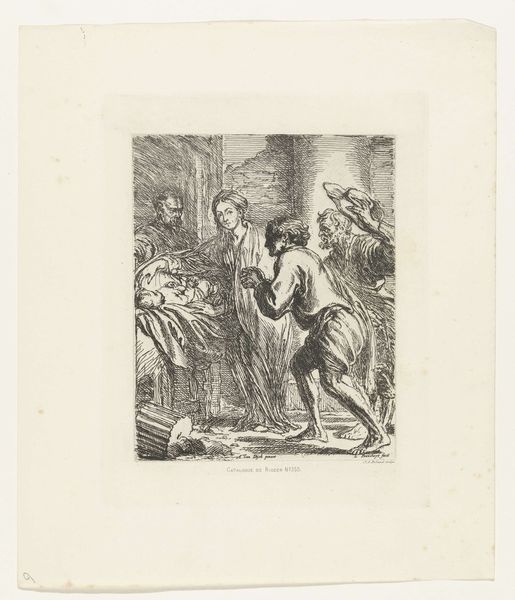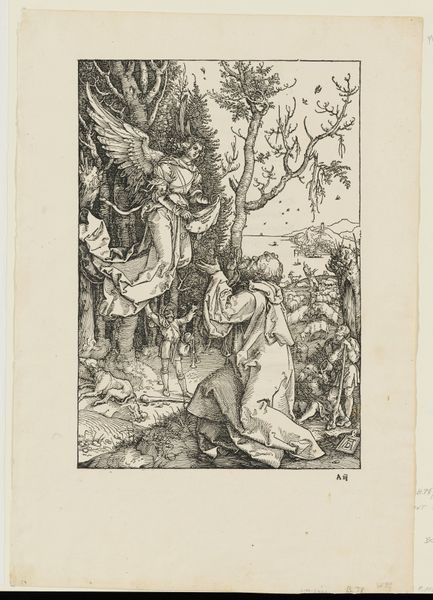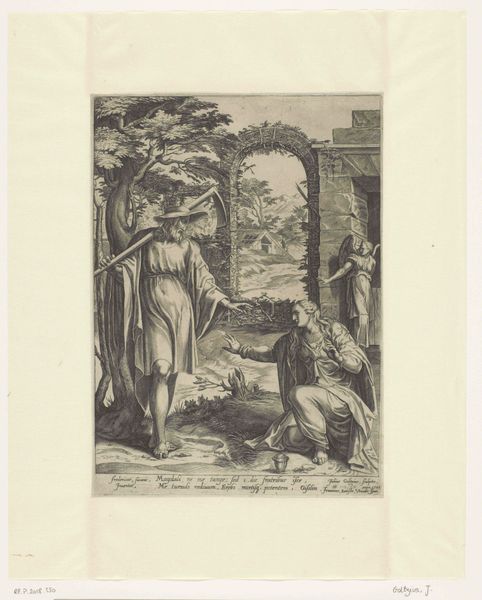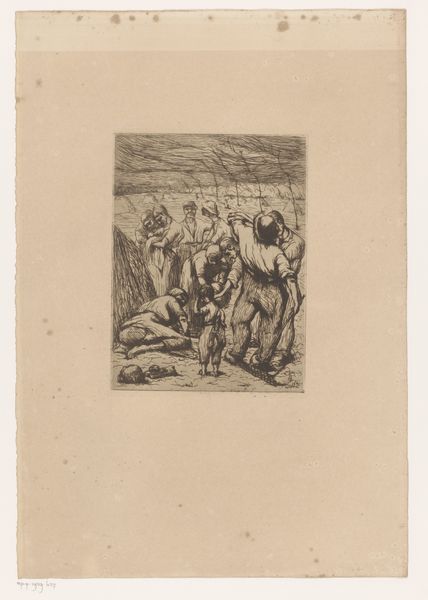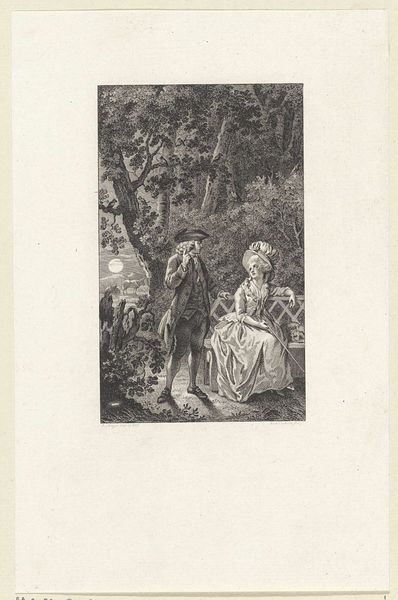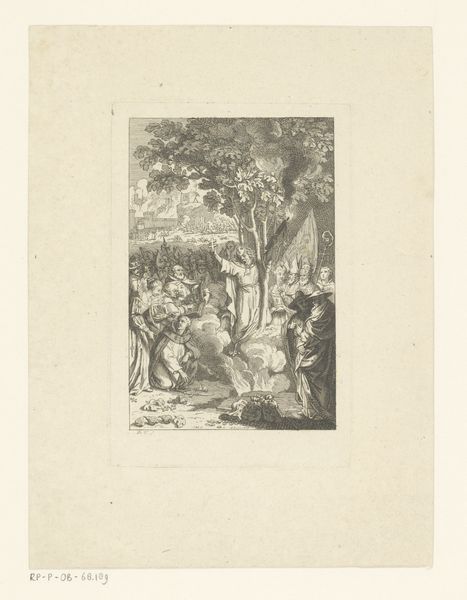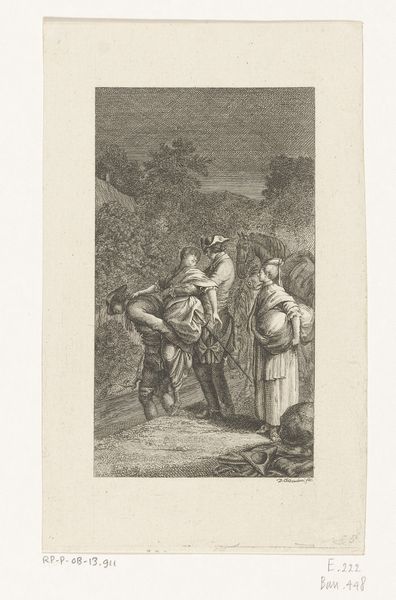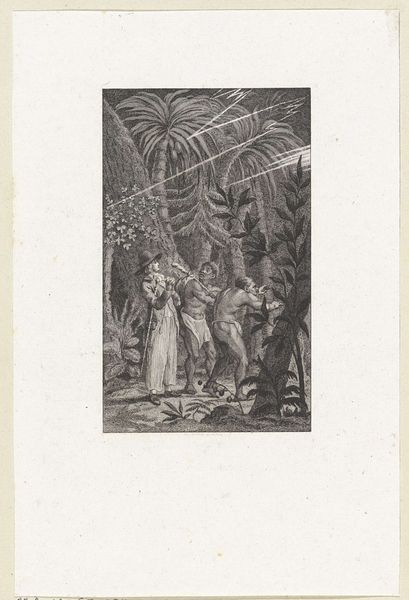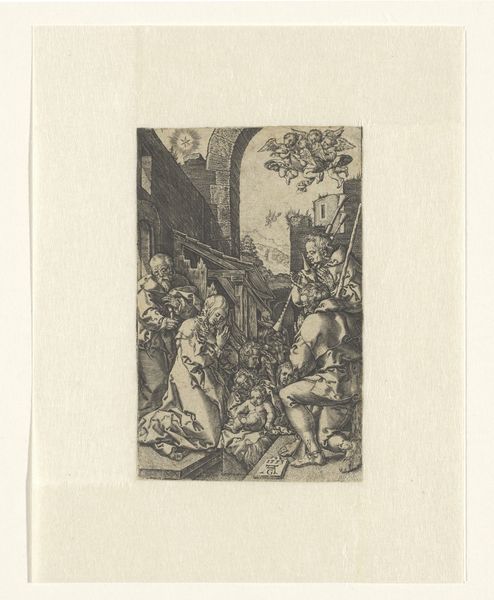
drawing, paper, ink
#
drawing
#
comic strip sketch
#
narrative-art
#
baroque
#
pen drawing
#
pen illustration
#
pen sketch
#
landscape
#
figuration
#
paper
#
ink line art
#
personal sketchbook
#
ink
#
ink drawing experimentation
#
pen-ink sketch
#
pen work
#
sketchbook drawing
#
genre-painting
Dimensions: height 156 mm, width 138 mm
Copyright: Rijks Museum: Open Domain
Curator: This ink drawing on paper, attributed to Nicolaas Verkolje and created sometime between 1683 and 1746, depicts a man with two children and a sheep under a tree. It's currently held at the Rijksmuseum. What’s your initial take? Editor: There's a beautiful simplicity to the linework that lends a dreamlike, pastoral feel. Yet, something about the weight of the lines and the composition feels more complex than just a peaceful family moment. Curator: I agree, and I find that the drawing’s strength lies in its apparent candidness; like a moment snatched from ordinary life. Notice the symbol of the sheep? The 'Agnus Dei', symbolic of innocence, meekness and vulnerability. Juxtapose this with the patriarchal figure; he is the protector, right? The lines are deeply symbolic within a historic, baroque framework of man, nature and dominion. Editor: That protective stance is complicated though. He looks weary, doesn’t he? The lines etched into his face and stance tell of burdens, hinting perhaps at societal pressures. It seems, from my perspective, more aligned with the burgeoning middle classes desire for status and land-ownership in the era. It’s a carefully constructed tableau of virtue but also of social climbing. Curator: That's an interesting counterpoint. The inclusion of children immediately suggests generational legacy, doesn't it? This harkens back to notions of continuation. The father transmits values onto his children. He is building something in that sense, just as a patron may build and influence within societal hierarchies. I feel that the symbol of legacy goes further than a simple snapshot, perhaps as something being deliberately propagated and built. Editor: A deliberate statement, absolutely! It raises questions for me; such as, where were these displayed? Was it a statement piece or hidden within a private study as a daily reminder? Was it something for social peers or internal familial meditation? I would bet on the former; visual strategies to establish and maintain social power were increasingly popular among the bourgeoisie, even at the time. Curator: Indeed! Looking at this artwork today allows us a valuable, visual entry point into understanding societal constructs, domestic beliefs, and their portrayal through material and symbolic artistic means of expression. Editor: Agreed! There's so much interwoven here: class, familial expectation and morality—captured with stark ink lines and forever rendered visible across centuries. It’s almost cinematic in its depth, and one can speculate on a variety of factors which drove this representation and image production.
Comments
No comments
Be the first to comment and join the conversation on the ultimate creative platform.
